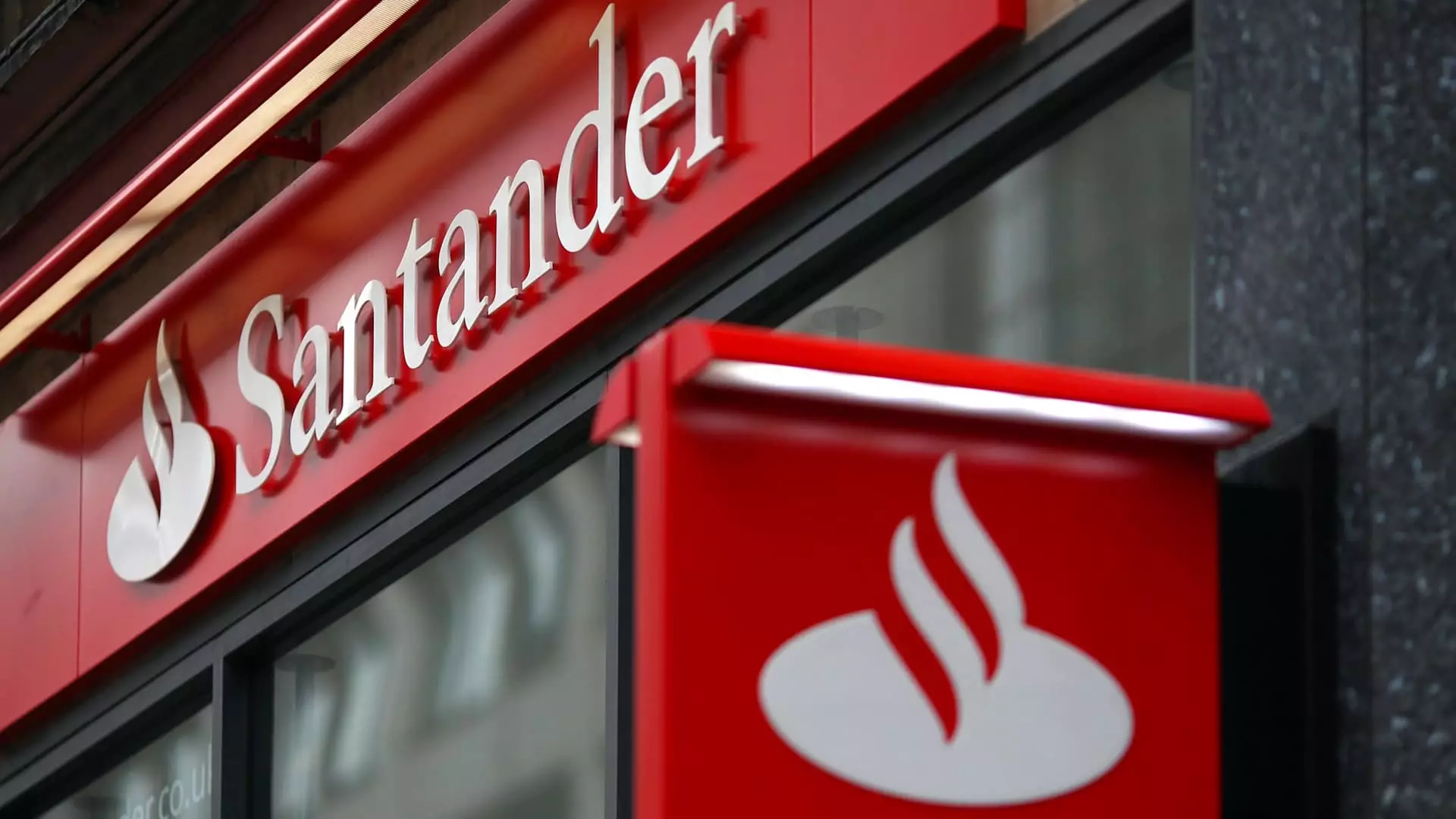Santander’s recent decision to acquire TSB from Sabadell marks a pivotal shift, not just for the bank itself but for the broader landscape of European banking. While the move might seem straightforward on paper—a $3.6 billion cash deal—the implications reverberate on many levels. This acquisition signifies more than just expansion; it embodies Santander’s bold reassertion of its commitment to the UK market, which it previously cast doubt upon following recent profitability struggles.
This bold move exemplifies a strategic recalibration, where Santander demonstrates a willingness to prioritize long-term growth and stability over short-term setbacks. Past years of turbulence in the UK segment—marked by declining profits and restructuring worries—had some observers questioning the bank’s perseverance. Yet, Santander’s leadership appears unfazed by these hurdles, viewing the UK as an unavoidable pillar of its diversified global portfolio. The company’s promise of a >20% return on investment underscores an optimistic, perhaps even aggressive, outlook, emphasizing confidence in integrating TSB seamlessly.
What makes this move compelling is Santander’s recognition of the UK’s intrinsic strategic value. Rather than retreat in the face of challenges, the bank chooses to fortify its presence through acquisition, boosting its return on tangible equity from 11% to 16%. This isn’t merely an act of expansion but a carefully calculated effort to enhance profitability and stabilize risk exposure by owning a high-quality, low-risk, and predictable business environment—all in hard currency, in sterling.
Reshaping Market Perceptions and Competitive Dynamics
While the deal serves Santander’s interests, it also acts as a strategic countermeasure to internal sector struggles—particularly the complex and tense situation surrounding Sabadell, BBVA, and the broader Spanish banking landscape. Sabadell’s attempt to counter a hostile takeover from BBVA is at the heart of this transaction, transforming the TSB sale into a defensive maneuver. This action not only aims to preserve Sabadell’s independence but also creates a window of opportunity for Santander to step in, potentially thwarting BBVA’s ambitions.
The broader geopolitical and regulatory environment amplifies the stakes. Madrid’s refusal to facilitate mergers that would undermine job security and regional autonomy reflects a cautious but protective stance over the Spanish banking sector’s integrity. Yet, European and national regulators seem to prioritize consolidation as a means for stability and resilience, provided the process respects certain conditions, such as maintaining operational independence for a transition period. This pragmatic approach encourages strategic deals—like Santander’s—by creating an environment where consolidation can proceed with minimal political interference.
This acquisition, therefore, is not just a financial transaction but a calculated move in a high-stakes chess game. Santander’s presence in the UK becomes a strategic leverage point in the ongoing tug-of-war over Spanish banks’ futures. Analysts suggest that by acquiring TSB now, Santander may be influencing Sabadell’s and BBVA’s internal strategies, possibly deterring aggressive pursuit of Sabadell, which is crucial amid a challenging competitive landscape.
Implications for the European Banking Sector
Santander’s willingness to pursue aggressive acquisitions highlights a broader trend—banks are increasingly viewing mergers and acquisitions (M&A) as essential survival tools in Europe’s fierce banking marathon. With domestic margins under pressure from weak mortgage pricing and intense competition, organic growth alone seems insufficient. Instead, strategic consolidations emerge as necessary catalysts for enhancing economies of scale and reinforcing market presence.
The UK’s banking sector, often regarded as mature but lucrative, now seems even more enticing. Santander’s emphasis on the UK underscores a calculated gamble: that growing market share through acquisition will offset past profitability dips. The promise of healthier future returns indicates confidence in the UK’s resilience and potential for recovery, especially as economic conditions stabilize post-pandemic and regulatory frameworks adapt.
However, this move also raises questions about the future landscape of European banking: Will banks become more acquisitive, risking over-consolidation and reduced competition? Or will regulatory scrutiny intensify, curbing such bold strategies? For now, Santander’s move reflects a belief that bold, well-planned mergers are the best route to long-term leadership—one where size and strategic positioning directly translate into market power and resilience.
A Personal Take on Santander’s Strategic Leap
From a critical perspective, Santander’s acquisition of TSB is undoubtedly a bold maneuver driven by a mix of ambitions and defensive necessities. While the bank claims to value the UK market immensely, one can’t ignore the underlying pressures it faces in maintaining profitability and relevance. The UK banking sector’s tough competitive environment, characterized by low interest margins and aggressive competitors, makes such acquisitions a high-stakes gamble.
Furthermore, Santander’s focus on maximizing shareholder value through these strategic moves is commendable but also warrants caution. M&A can lead to integration challenges, cultural clashes, and unforeseen operational risks that might undermine short-term gains if not managed carefully. The promise of a >20% return on invested capital is attractive, yet it hinges on flawless execution amid an evolving regulatory environment.
Importantly, Santander’s approach reflects a degree of strategic daring that could serve as a blueprint for other banks grappling with similar challenges. In a European landscape where consolidation is often hampered by political and regulatory bottlenecks, Santander’s aggressive expansion and clear messaging about its commitment to the UK demonstrate that bold, confidence-driven decisions are still possible when backed by robust analysis and a long-term vision.
The real question remains whether this move will translate into sustained growth and stability or become a costly lesson in overreach. Regardless, Santander’s acquisition of TSB signals its intent not just to survive but to thrive by harnessing strategic boldness, positioning itself as a formidable player in both the UK and European banking sectors for years to come.

